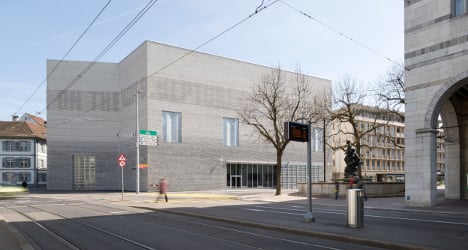On Sunday the Kunstmuseum Basel, one of Switzerland’s most important public art museums, opened the doors to its brand new building, three years in the making, and reopened its main building, which has been closed for renovations for the past 13 months.
The construction work means the museum now comprises 10,000m2 of exhibition space set over three buildings: the renovated original museum, which dates from 1936; a second space dedicated to contemporary art; and the new building.
The total cost of the work was 100 million francs ($104 million), 50 percent of which was public money.
In a statement, the museum said “The new building provides an exhibition space that meets the most exacting demands of art presentation today, and in future it will house all major special exhibitions.”
It also said it hoped the new building – designed by Basel-based architects Christ & Gantenbein – would be “another architectonic highlight in the Basel cityscape”.
Basel has long been a hub for cutting-edge architecture. As the native city of star architects Herzog & de Meuron it features many of their creations, as well as buildings designed by many other internationally renowned architects including Mario Botta and Renzo Piano.
As well as special exhibitions, the new building will house the Kunstmuseum’s collection of art from 1950 to 1990, in particular American art.
Meanwhile, renovation work in the main building has created new spaces for the bookshop and art education workshops, as well as an underground link to the new building just over the road.
The third building, the Gegenwart, houses work from 1990 to the present day.
The world-renowned Kunstmuseum’s collections encompass 4,000 paintings and 30,000 drawings, including one collection dating back to the 17th century, making it the world’s oldest municipal art collection.



 Please whitelist us to continue reading.
Please whitelist us to continue reading.
Member comments